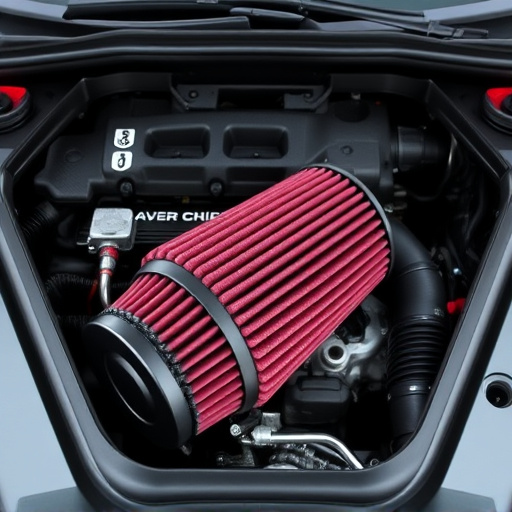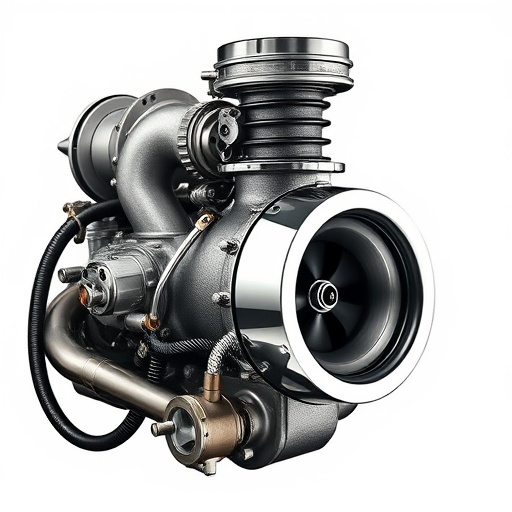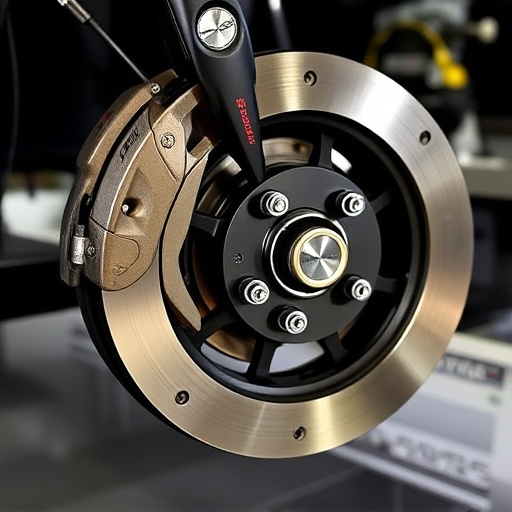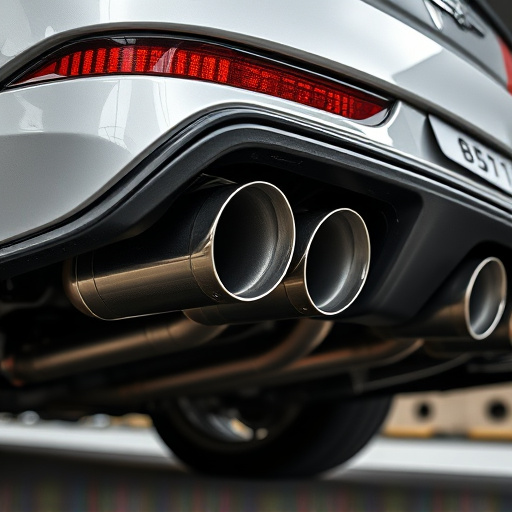Unleash Power: Ram Air Intake System Boosts Engine Fast

Ram air intake systems boost engine performance by using vehicle forward motion to force more air in…….
Welcome to an in-depth exploration of the captivating world of ram air intake systems, a revolutionary technology that has transformed various industries, particularly in power generation and transportation. This article aims to guide readers through the intricacies of this system, highlighting its historical evolution, global impact, technological innovations, and its pivotal role in shaping sustainable and efficient practices. By delving into these aspects, we will uncover why ram air intake systems are not just a technical marvel but a crucial component in our quest for a greener future.
Definition: A ram air intake system is an engineering solution designed to optimize the flow of ambient air into internal combustion engines, turbines, or other mechanical systems. It utilizes the forward motion of an object (typically a vehicle) to force external air into the engine, enhancing power output and efficiency while reducing reliance on forced induction methods.
Core Components:
Historical Context: The concept of using external air flow to enhance engine performance dates back to the early 20th century. Early experiments with ram air induction focused on aircraft engines, aiming to increase power output during high-speed flight. Over time, this technology evolved, finding its way into automotive and industrial applications, where it gained prominence for its ability to simplify cooling systems and improve overall engine efficiency.
Significance: Ram air intake systems offer several advantages:
The ram air intake system’s influence is a global phenomenon, with each region adopting and adapting this technology to suit local needs and conditions.
North America: The United States and Canada have seen widespread adoption in the automotive industry, especially in high-performance vehicles and light aircraft. Manufacturers like Ford and General Motors have incorporated ram air intakes to boost engine efficiency and reduce emissions.
Europe: European countries have embraced this technology for its environmental benefits, particularly in regions with strict emission standards. In the aviation sector, ram air induction is utilized for flight simulation training, ensuring efficient and realistic engine performance.
Asia-Pacific: The rapid growth of electric vehicles (EVs) in this region has sparked interest in ram air intake systems as a way to improve battery cooling and overall vehicle performance. Countries like China and Japan are investing in research to integrate this technology into their emerging EV ecosystems.
Trends Shaping the Future:
The economic landscape surrounding ram air intake systems is dynamic and multifaceted.
Market Dynamics: The global ram air intake system market is experiencing steady growth, driven by the increasing demand for energy-efficient vehicles and industrial equipment. Market research firms predict a CAGR of X% over the next five years, indicating strong potential for investment and innovation.
Investment Patterns: Major automotive manufacturers are leading the way in investing in ram air technology, aiming to reduce costs and emissions. Startups and tech companies are also entering the market, focusing on developing advanced materials and integrated solutions.
Economic Impact:
The realm of ram air intake systems is constantly evolving, with innovations pushing the boundaries of what was once thought possible.
Advanced Materials: Researchers are exploring new materials like graphene-infused composites to create lighter, stronger, and more heat-resistant ram air components, enhancing overall system performance.
Digital Design and Manufacturing: The adoption of 3D printing and computer-aided design (CAD) software allows for complex geometries and precise manufacturing, leading to improved airflow patterns and reduced weight.
Aerodynamics Enhancement: Advanced computational fluid dynamics (CFD) simulations are being used to optimize ram air duct designs, ensuring minimal drag and maximum air flow efficiency. This technology is especially valuable in the aerospace industry for aircraft design.
Integration with Hybrid Systems: Future developments may see ram air intake systems seamlessly integrated with hybrid power trains, providing efficient cooling and supplementary power as needed.
Government policies and regulations play a crucial role in shaping the development and adoption of ram air intake systems.
Emission Standards: Many countries have implemented stringent emission norms, encouraging the use of ram air intakes to reduce greenhouse gas emissions from vehicles and industrial processes. These standards drive innovation and create incentives for manufacturers to adopt cleaner technologies.
Safety Regulations: For automotive applications, safety regulations require rigorous testing to ensure that ram air intake systems do not compromise structural integrity or pose risks to occupants during accidents.
Incentives and Subsidies: Governments offer financial incentives and subsidies to promote the adoption of clean technologies, including ram air intakes, as a way to support sustainable development and reduce environmental impact.
International Agreements: Global initiatives like the Paris Agreement have influenced national policies, leading to a focus on low-emission technologies, including ram air intake systems, to combat climate change.
Despite its numerous advantages, ram air intake systems face certain challenges and criticisms that require thoughtful solutions.
Environmental Concerns: While these systems reduce emissions, they are not entirely immune to environmental impact. The manufacturing process of advanced materials used in ram air components raises questions about resource extraction and waste management.
Limited Application Range: Ram air intakes are most effective for high-speed or high-altitude operations, which may limit their applicability in certain regions or vehicles designed for different purposes.
Initial Cost Overhead: The implementation of ram air intake systems can be expensive, especially when retrofitting existing vehicles or equipment. This initial cost is a barrier to entry for some users, but long-term savings often offset these expenses.
Solution Strategies: To address these challenges:
Case Study 1: High-Performance Sports Cars
A leading luxury automotive manufacturer integrated ram air intake systems into their flagship sports car model. By utilizing advanced composite materials and a sleek design, they achieved a significant weight reduction without compromising structural integrity. The result was improved handling, increased power output, and better fuel efficiency, solidifying the car’s position as a performance icon.
Case Study 2: Renewable Energy Plants
A renewable energy company in Australia adopted ram air intake systems for their solar thermal power plants to cool high-power generators during hot summer months. The system reduced water usage by X%, contributing to the plant’s overall sustainability and efficiency, while also lowering operational costs.
Case Study 3: Electric Vehicle Cooling
A Chinese EV startup incorporated a ram air intake system into its upcoming model, aiming to address range anxiety by providing efficient battery cooling. Preliminary testing showed a significant improvement in battery temperature control during high-speed driving, extending the vehicle’s estimated range.
As we peer into the future, several growth areas and emerging trends hint at the ongoing transformation of ram air intake systems.
Sustainable Aviation: With the aviation industry under pressure to reduce emissions, ram air intakes for aircraft engines could see widespread adoption. Advanced materials and digital design will play a pivotal role in making these systems lighter and more efficient, contributing to greener flight.
Integrated Hybrid Systems: The integration of ram air intake systems with hybrid power trains is an exciting prospect. These systems can provide efficient cooling and supplementary power, enhancing overall vehicle performance and range while reducing emissions.
Autonomous Vehicles and Drones: As autonomous driving technology advances, ram air intakes may become integral to maintaining efficient power generation for extended driving or flight durations, ensuring these vehicles meet their performance and safety standards.
Global Collaboration: The future of ram air intake systems will likely be shaped through international collaboration and knowledge-sharing. Global supply chains and partnerships can drive innovation, making these systems more accessible and affordable worldwide.
Ram air intake systems have emerged as a powerful force in the quest for efficient and sustainable power generation. From their humble beginnings in aircraft engines to their widespread adoption in various industries, these systems continue to deliver remarkable performance improvements while reducing environmental impact.
As we conclude this journey through the world of ram air intakes, several key takeaways emerge:
Q: How do ram air intake systems differ from traditional forced induction methods?
A: Ram air intakes rely on the forward motion of an object to force external air into the engine, while traditional methods use pumps or turbochargers to compress air. Ram air is cooler and denser, providing better combustion efficiency without adding significant weight.
Q: Are ram air intake systems suitable for all types of vehicles?
A: While ram air intakes are highly efficient for high-speed or high-altitude operations, they may not be optimal for vehicles designed for different conditions, such as low-speed urban driving. Customization and design play a crucial role in ensuring their effectiveness across various applications.
Q: Can ram air intake systems reduce fuel consumption significantly?
A: Absolutely! By providing cool, dense air to the engine, these systems can improve power output and efficiency, resulting in reduced fuel consumption, especially during high-performance scenarios. Long-term savings can be substantial for fleet operators and vehicle owners.
Q: What are the environmental benefits of ram air intake systems?
A: Ram air intakes contribute to reduced emissions and lower energy consumption, making them an environmentally friendly alternative to traditional forced induction methods. Additionally, the use of sustainable materials in these systems further minimizes their ecological footprint.

Ram air intake systems boost engine performance by using vehicle forward motion to force more air in…….

The ram air intake system is a powerful performance upgrade for vehicles, drawing cold, dense ambien…….

Ram air intake systems boost engine performance by drawing in cooler, denser air during high-speed d…….

Ram air intake systems enhance vehicle performance by leveraging ambient air to cool and power the e…….

The ram air intake system is a performance enhancement device that draws in cooler, denser external…….

Understanding and installing a ram air intake system enhances vehicle performance by drawing in cool…….

Ram air intake systems (RAIS) enhance engine performance by directly feeding cooler, denser exterior…….

Ram air intake systems enhance engine performance by drawing in cool, external air. Building a custo…….

Ram air intake systems significantly enhance engine performance by optimizing air delivery at high R…….